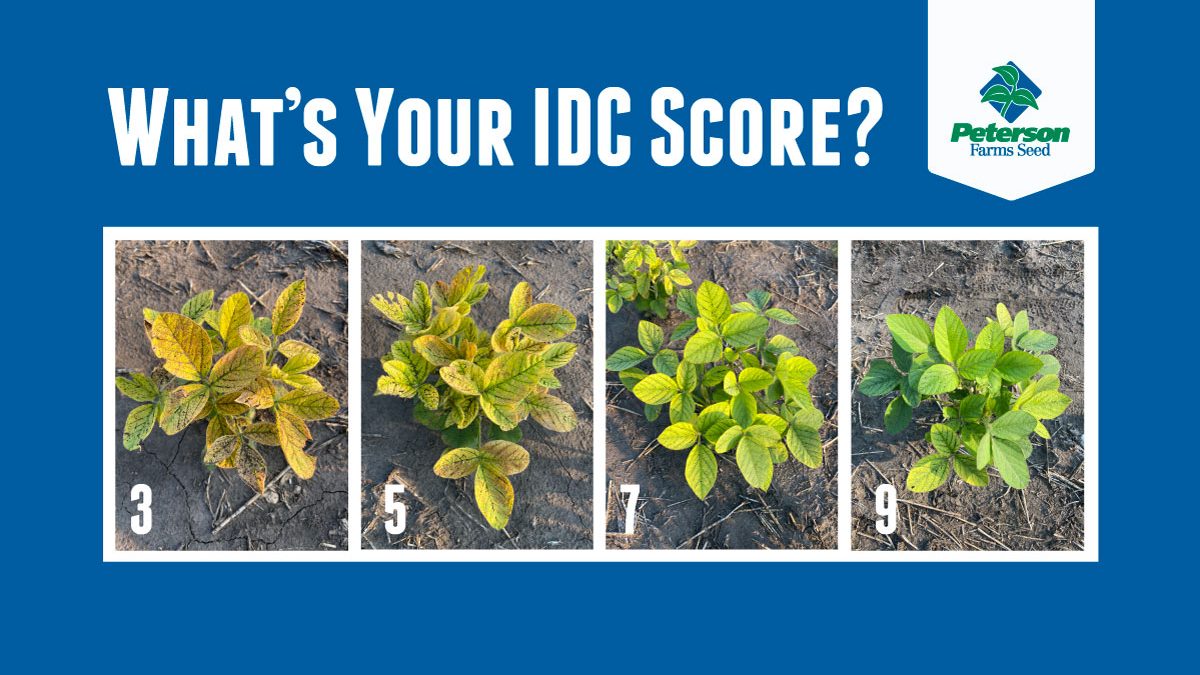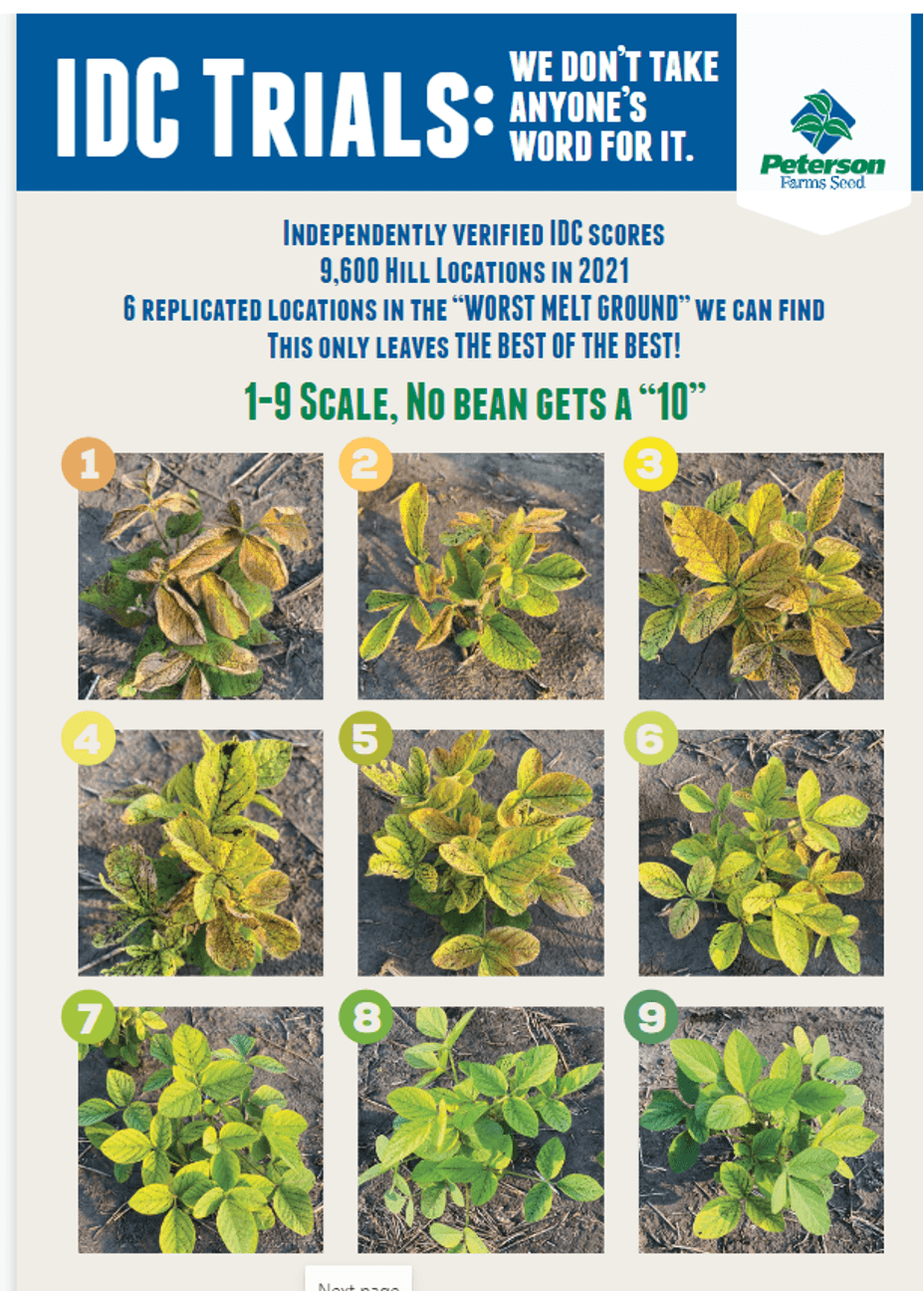What’s Your IDC Score?

We felt we needed more IDC data when making product decisions. So – we added our own replicated IDC testing program with a total of 9,400 individual plots. The locations were selected for “melt ground,” on some of the harshest soil conditions, so we could make sure when we tell you a line is good for IDC, it is! No other company has this level of testing in our region.

When considering soybeans for the 2022 growing season, think about:
IDC Management
#1 Know Your Varieties
Soybean lineups are changing faster than ever and some companies just don’t understand what they are selling. Knowing your IDC rating is critical!
We are dedicated to providing the best IDC placement and ratings for the region. Our soybeans have gone through both University testing for accuracy, and our own Dennis Schultze’s IDC replicated testing on the “hottest” ground in the region.
#2 Planting Population
Population is key. Planting populations have decreased over the last few years with taller germplasm, more branching, no herbicide-burning and high white mold levels. This is a double-edged sword as a higher population is a way to mitigate IDC in the field. In 2022, think about adjusting some of these populations. Run a few strips if you want to trial.
#3 Iron Chelate Application
At up to $30 per acre, adding iron chelate products can be a tough pill to swallow. But the added expense may be worth it, at least for your toughest fields. Looking back to the mid-2000s, we have seen substantial differences on the toughest acres, with mixed results on better soils.
The hot, dry 2021 growing season may have left high nitrate-N residual levels in the soil in areas where corn yields were lower than normal. The high nitrate-N may result in worsening IDC conditions.
Test your soil to determine the levels of carbonates, salinity, and nitrogen residual.



